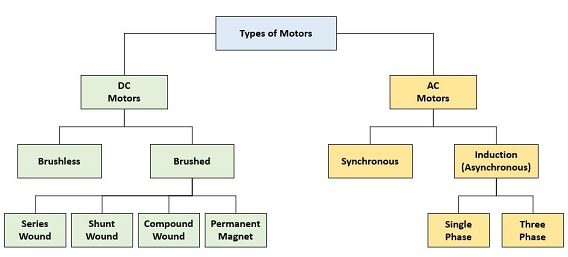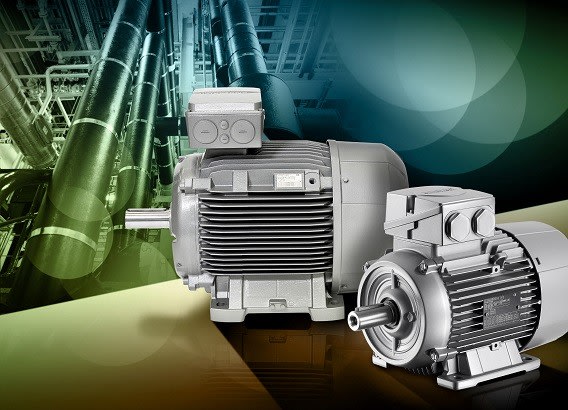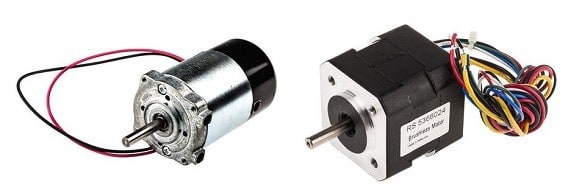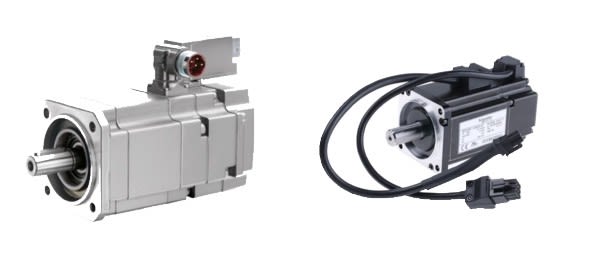Different types of motors and their use
Follow articleHow do you feel about this article? Help us to provide better content for you.
Thank you! Your feedback has been received.
There was a problem submitting your feedback, please try again later.
What do you think of this article?
When purchasing a motor, it’s often asked which technology is better, AC or DC, but the fact is that it is application and cost dependent.
AC Motors
AC motors are highly flexible in many features including speed control (VSD - Variable Speed Drives) and have a much larger installed base compared to DC motors, some of the key advantages are:
- Low power demand on start
- Controlled acceleration
- Adjustable operational speed
- Controlled starting current
- Adjustable torque limit
- Reduced power line disturbances
The current trend for VSD is to add more features and programmable logic control (PLC) functionality, which add advantages but require greater technical expertise during maintenance.
Click here for an example of an AC Motor from RS
Types of AC motor include:
Synchronous
In this type of motor, the rotation of the rotor is synchronized with the frequency of the supply current and the speed remains constant under varying loads, so is ideal for driving equipment at a constant speed and are used in high precision positioning devices like robots, instrumentation, machines and process control
Click here for an example Synchronous Motor from RS
Induction (Asynchronous)
This type of motor uses electromagnetic induction from the magnetic field of the stator winding to produce an electric current in the rotor and hence Torque. These are the most common type of AC motor and are important to industry due to their load capacity, with Single-Phase induction motors being used mainly for smaller loads, for example in household appliances whereas, Three-Phase induction motors are used more in industrial applications including compressors, pumps, conveyor systems and lifting gear.
Click here for an example Induction Motor from RS
DC Motors
DC motors were the first type of motor widely used and the systems (motors and drive) initial costs tend to be typically less than AC systems for low power units. However, with a higher power, the overall maintenance costs increase and would need to be taken into consideration. The DC Motors speed can be controlled by varying the supply voltage, they are available in a wide range of voltages, the most popular types are 12 & 24V. DC Motor advantages being:
- Easy installation
- Speed control over a wide range
- Quick Starting, Stopping, Reversing and Acceleration
- High Starting Torque
- Linear speed-torque curve
DC motors are widely used and can be found in small tools and appliances, through to electric vehicles, lifts & hoists
Click here for an example of DC Motors from RS
The two common types are:
Brushed
These are the more traditional type of motor and are typically used in cost-sensitive applications, where the control system is relatively simple, such as in consumer applications and more basic industrial equipment, these type of motors can be broken down as:
- Series Wound – This is where the field winding is connected in series with rotor winding and speed control is by varying the supply voltage, however, this type offers poor speed control and as the torque to the motor increase, then the speed falls. Applications include automotive, hoists, lifts and cranes as it has a high starting torque.
- Shunt Wound – This type has one voltage supply and the field winding is connected in parallel with the rotor winding and can deliver increased torque, without a reduction in speed by increasing the motor current. It has a medium level of starting torque with constant speed, so it's suitable for applications including lathes, vacuum cleaners, conveyors & grinders.
- Compound Wound – This is a cumulative of Series and Shunt, where the polarity of the shunt winding is such that it adds to the series fields. This type has a high starting torque and can run smoothly if the load varies slightly, it's used for driving compressors, variable-head centrifugal pumps, rotary presses, circular saws, shearing machines, elevators and continuous conveyors
- Permanent Magnet – As the name suggests rather than electromagnet a permanent magnet is used and are used in applications where precise control and low torque, such as in robotics, servo systems.
Brushless
Brushless motors alleviate some of the issues associated with the more common brushed motors (short life span for high use applications) and are mechanically much simpler in design (not having brushes). The motor controller uses Hall Effect sensors to detect the rotor's position, using this the controller can accurately control the motor via current in the rotor coils) to regulate the speed. The advantages of this technology is a long life, little maintenance and high efficiency (85-90%), whereas the disadvantages are higher initial costs and more complicated controllers. These types of motors are generally used in speed and positional control with applications where reliability and ruggedness are required, such as fans, pumps and compressors.
An example of brushless design is Stepper Motors, which are primarily used in open-loop position control, with uses from printers through to industrial applications such as high-speed pick and place equipment.
Brushless motors are also available with a feedback device which allows the control of the Speed, Torque and Position of the motor and the intelligent electronics control all three so, if more torque is required to accelerate quickly to a certain speed then more current is delivered, these are known as Brushless Servo Motors.





